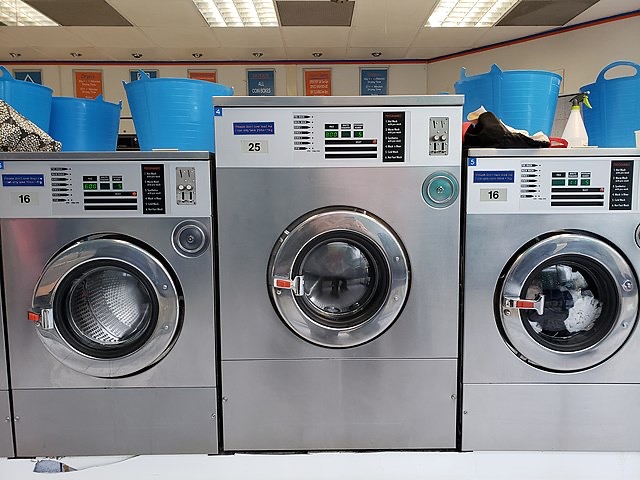In a case as bizarre as it is groundbreaking, a South Korean man in his twenties has been convicted of serial rape after a reflection captured in a washing machine door provided critical visual evidence. Yes, a washing machine—a household appliance most associated with mundane chores—became a key witness in a high-stakes legal battle. This case, which initially led to an eight-year prison sentence (later reduced to seven on appeal), has captivated the nation and legal observers around the globe.
It’s not just the brutality of the crime that’s shocking—it’s how the justice system was able to convict the rapist using an incidental reflection caught on video. This case has quickly become a landmark moment in forensic investigation, demonstrating how technology—and sometimes sheer accident—can play a pivotal role in uncovering the truth.
So how did a simple reflection lead to justice in one of the most sensitive and underreported types of crimes? Let’s take a deep dive into this historic case, the people involved, the unusual forensic technique that cracked it open, and what this means for victims and the courts in the age of digital evidence.
Case Overview – A Crime Hidden in Plain Sight
The defendant, whose name has not been released due to privacy regulations, is a man in his twenties. His accuser is a former girlfriend who bravely came forward, accusing him of raping her six separate times between March and April of the previous year. These were not random attacks—they took place over weeks, in a context of trust that made them all the more painful and complex.
At the time, the victim was reportedly struggling emotionally but found the strength to seek justice. She approached the authorities, leading to an investigation that would uncover far more than initially expected.
Investigators soon discovered that the accused had recorded one of the assaults on his own smartphone. Whether this was out of arrogance, carelessness, or intent to further manipulate, it backfired spectacularly.
Six Acts of Rape Over Two Months
According to court documents, the victim testified that she was sexually assaulted multiple times while still entangled in a turbulent relationship with the accused. Between March and April, she endured six horrifying episodes of rape, emotional abuse, and coercion. The abuse reportedly took place in his home—a setting that should have been safe, but instead became a crime scene.
In such cases, it’s often the victim’s word against the perpetrator’s. Physical evidence can be minimal or non-existent, especially when the crime involves someone the victim knows. That’s why the digital trail left behind became such a critical part of the puzzle.
The Unlikely Witness – A Washing Machine
The real twist came when investigators went through the suspect’s phone. Amidst stored videos, they found footage of one of the assaults. It wasn’t just damning because of the act itself—what sealed the case was a reflection captured in the glass door of a washing machine positioned near the scene.
This unintentional recording became the key piece of corroborative evidence. In the reflection, authorities could see enough to confirm the victim’s testimony. It offered clear visual support to her claims, eliminating doubts and reinforcing the severity of the charges.
Investigators Spot the Game-Changing Detail
At first glance, the footage seemed incomplete—angles were obscured, and the perpetrator’s face was not fully visible. But forensic analysts, trained to notice the smallest inconsistencies, spotted the curved reflection. Using enhancement tools and frame-by-frame analysis, they were able to identify the positioning, movements, and identity of the assailant based on reflected imagery.
The washing machine, a silent fixture in the background, had captured the undeniable proof needed to push the case beyond reasonable doubt. The footage was authenticated, and its legality verified, making it admissible in court. The washing machine had become, essentially, a digital eyewitness.
Legal Proceedings and Court Decision
At trial, the accused denied the charges and attempted to discredit the evidence. His legal team argued for a reduced sentence or dismissal based on consent and lack of concrete visuals. However, the reflection evidence proved to be the linchpin of the prosecution’s argument.
The court initially sentenced the man to eight years in prison. He filed an appeal, contesting both the conviction and the severity of the sentence. In a follow-up hearing, the Seoul High Court upheld the conviction but reduced the sentence to seven years, citing mitigating factors not publicly disclosed.
While some may question the reduction, the reaffirmation of guilt—and the use of innovative forensic methods—has been widely praised.
Sentence Reduced, But Conviction Upheld
The court emphasized that the integrity of the evidence and the consistency of the victim’s testimony were pivotal. Judges noted that the digital video, though unorthodox in format, provided clarity and corroboration that could not be dismissed. While the sentence adjustment disappointed some, the broader legal community applauded the validation of such evidence in crimes that are notoriously difficult to prove.



